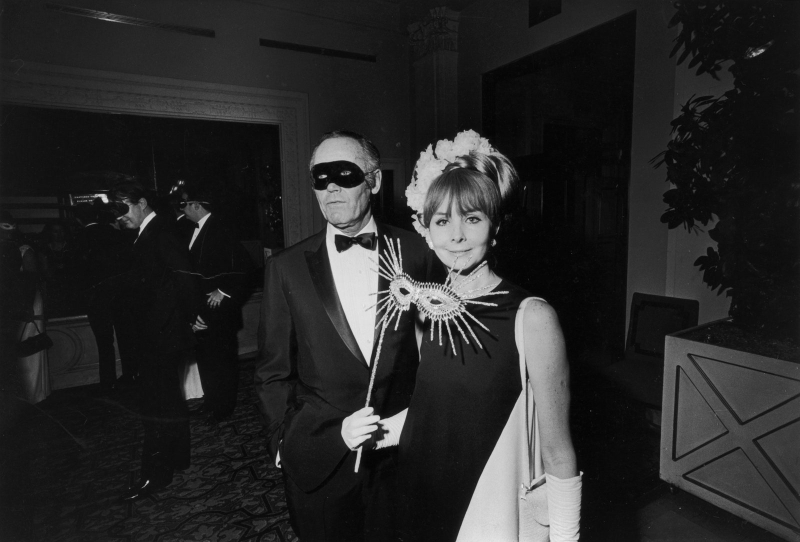Contents

At a time when our day-to-day attire tends toward the casual, a black-tie dress code can feel scarily specific, leaving people to wonder if what they already have in their closets will cut it. Even worse, dress codes that seem helpfully descriptive—“evening,” “beach formal,” “hipster formal,” “California cocktail”—only end up causing more confusion, as they offer no real insights into what a guest is expected to wear. And you never want to feel like the person who missed the memo.
Diana Vreeland—that legendary arbiter of taste—is no help here either, sadly. The former Vogue editor’s advice on black-tie events was…not very constructive. “The best time to leave a party is when the party’s just beginning,” she once quipped. “There’s no drink that kills except the drink that you didn’t want to take, as the saying goes, and there’s no hour that kills except the hour you stayed after you wanted to go home.”
So, we know when to leave. But how to arrive–and in what outfit? Here’s Vogue’s guide to decoding the black-tie dress code on your party invites this season:

What does a black-tie dress code actually mean?
For men—or women who want to dabble in suiting—the brief is pretty simple: black tie means you’re to wear a black bow tie with your dinner jacket. Because it’s a step down in fanciness from white tie, the black-tie dress code leaves more room for interpretation when it comes to garments beyond the suit—but there are still certain parameters. While one woman’s “dress to impress” may mean a barely there Mugler minidress, that would be entirely wrong for a charity gala (though definitely impressive!). So, in moments of doubt, don’t be afraid to ask your host for clarification on the level of formality they are expecting of their guests—as well as intel on what they themselves are planning to wear.
Generally speaking, “black tie” for women means “long.” A floor-length dress in an evening-appropriate fabric, such as velvet, chiffon, silk, or lace, is the best bet. While a cocktail dress—shorter, possibly ritzier—might cut it if your host is more relaxed, it’s best to assume that a floor-sweeping number (or the aforementioned tuxedo situation) is expected.
How can I predict how fancy an event will be?
There will be clues. If your invitation came on thick card stock, complete with a personalized wax seal and an address in calligraphy, the dress code will likely be just as formal. But if your memo arrives digitally—via text or something like Partiful—you can take a breath. The exception there is Paperless Post: just because the invite came in via email doesn’t mean it’s not a floor-length affair. Make sure to give the invitation a close read to get an idea of what’s expected of you.
How can I avoid making a wardrobe faux pas?
If possible, try to discern who from your social circle will also be attending—that way, you’ll have lots of people to quiz about their own interpretations of the dress code. (And before you worry: No, revisiting your wardrobe is not a faux pas. It just shows that you’re a self-assured shopper with a good grasp on your personal style!) But, above all, you don’t want to turn up wearing the same dress as someone else. Consider starting a text or email thread with everyone you know going to make sure there is no overlap. But, hey—things happen. If you end up accidentally matching with another guest anyway, embrace it, and acknowledge your doppelgänger. Maybe even pose together for a quick Instagram Story!
What shoes should I wear?
While you’ll want to stick with the formal dress code, be aware of your environment. Scope out the location ahead of time, if you can: will you be navigating gravel, paving, lawn, or a parquet floor? Assess the routes you might need to take over the course of the evening, and be prepared to park the stilettos. Or, if you simply must wear your teetering Jimmy Choos, find a willing squire to ferry you across danger zones. And, on that note: Never, ever take your shoes off on the dance floor. You may step on a rogue shard of glass—or another guest may step on your pedicure. And nothing kills the party spirit like a broken ankle or a trip to the ER for stitches.
Can I wear black?
Absolutely! There’s a reason everyone else is wearing it. Just make sure your accessories are elevated—your host will appreciate the effort you’ve made, and you’ll stand out from the sea of guests in black. If all else fails, buy a cluster of diamanté brooches and pile them on to lapels and necklines—or in messy, bed-head hair. Tell everyone they’re heirlooms!
What we’ve learned over the years?
Take the advice given, above, but also use your discretion. Not every black-tie event is the same, so the rules may vary, but the important thing is always to respect the host and follow their vision for the night’s dress code.
Black-tie events can pose an unnerving sartorial challenge, but once you’ve done one, you know how to tick the boxes while also feeling like yourself. Whether it’s a simple frock or standout gown, don’t be afraid to repeat outfits; it’s chic to look the part, but even chicer to do so in a responsible way. (Even royals and celebrities can be spotted wearing outfits they were papped in before.) Whether you achieve that by arranging your wardrobe by season or by degree of formality, build your own black-tie capsule wardrobe and you’re set.

